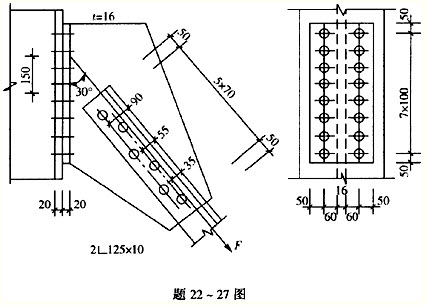(二)文学类、实用类文本阅读(选考)(15分)本题为选考题,请从甲乙两类文本中选一类作答,不得再做另一类文本的题目。(甲)文学类文本阅读(15分)阅读下面的文字,完成13~15题。 祖 屋 农人祖屋,是我内心深处最鲜活的那一处,秘不示人,只怕她遭了风雨的侵蚀,抑或因晾在空气下而变质。在我心中,她自高大到矮小,由缤纷到简单,由喧嚣到沉寂,到后来一直缩进我的梦里,晶莹成了枕边的一颗泪珠。在很长的时间里,祖屋是我的整个世界。或许是自第一次睁开眼睛,我便开始了探寻祖屋的秘密。接下来,便用小小的身躯,摸爬丈量着这个宅院……祖屋的大门朝东南。所谓的大门,只是一个枝条编成的柴扉而已,柴扉上钉着小扣,上着一把几乎锈透了的老锁,其实只是做做样子。主屋是三间西屋,石头砌垒的底层墙上,土坯一直到顶,其上是用厚厚的黄草拍成的蓑衣似的草屋脊。正屋用细泥糊就的外墙面,被风雨侵蚀,一条条的细槽沟和窄缝遍布其上,斑驳着岁月的手艺。祖屋中,正正当当四平八稳地摆着一张八仙桌。记事起,就觉得爷爷除去到院里纳凉、到地里干活之外,从来没有离开过这桌子右边——也被我们称为“上首”——他那把椅子。每年除夕夜,总是这样一幅场景:爷爷稳坐上首,爸爸、叔叔、哥哥、我和堂弟则围桌而坐,相互让菜、敬酒、劝酒,奶奶则带着她的儿媳们张罗忙活。大桌子的旁边,是在农村被称为“憋来气”的土炉子,也是我印象里最暖的所在。冬天里,往炉边一凑,仿佛冻透了的手脚、冻得通红的鼻头和接近透明的耳朵瞬间被暖了过来,有时接过奶奶递来的煎饼,贴在炉壁上一烤,一股香气便悄悄弥漫开来。那被土炉子烙得焦黄的煎饼,至今烙在我的脑海里,抠都抠不掉……呼吸看祖屋院子里几代人呼吸过的空气,跺着院子里叠了无数摞的几代人的脚印,我渐渐长大。祖屋却总是一副老成持重的模样。看起来同样一成不变的,是屋檐下的那个燕子窝。小学时,有一次放学回来,我同忙碌着的燕子有过一次对话,刚刚北归的它,身上还附着南方的暖意。我对燕子说,“佐罗先生,你好”,燕子瞅着我发愣,看来这家伙健忘,过了个冬天就把老朋友给忘了,“它不是你那只燕子了,这是它孩子,我认得”,奶奶在一旁边喂着鸡边对我说。噢,原来也是在变的。那时候,无论上学还是上班,在外面游荡累了,总要回祖屋住上几天。每到清晨,爷爷奶奶便会在院子里说起话来。有时是催我们起床,有时则是云彩啦天气啦一些无关紧要的事情——原来他们只是需要一个话头来打破这农家院的寂静罢了。早上飘荡在祖屋院里或高或低的说话声,或许是我所有关于故乡的记忆中最难割舍的情愫。后来,没有了人气养着的祖屋,再也打不起一点点精神来。就像当年我的祖父,坐在他那把咯咯作响的躺椅上,到最后老得连眼皮都不愿眨一下。没有悬念,一切都抵御不了岁月的磨洗。我的祖屋,虽然拼命挣扎着力图站直身子,拼命挣扎着不被风雨剥去最后一层外衣,拼命挣扎着给这个院落和世界留下最后一点记忆,但在一个风雨之夜,最终还是轰然倒下——这当然是父亲后来告诉我的。若干年下来,我觉得那轰然倒下的身影,一直实实在在地压在我心上。现在,站在已无往日印迹的祖屋的院子里,思绪纷扬。一阵从岁月深处的角落里吹来的风,抚着我的耳朵,轻轻告诉我:“她也经常思念过去。”(摘编自《人民日报》2013年7月13日)
下列对作品的概括与分析,不正确的两项是( )(5分)
A.祖屋深藏在“我”的内心深处,“我”担心“她”被侵蚀或变质;祖屋曾是“我”的整个世界,“她”陪伴着“我”长大。
B.“一个枝条编成的柴扉”“石头砌垒的底层墙”“厚厚的黄草拍成的蓑衣似的草屋脊”,写出了祖屋的简朴、雅致与厚重。
C.文中写祖屋里的八仙桌及发生在它周围的生活片段,点明“爷爷”在祖屋中的中心地位,表现了“我”家的和乐融洽。
D.祖屋里的“土炉子”是“我”记忆中最温暖的地方,它既可取暖又可烙饼,用它烙的煎饼,深深地印在“我”的脑海里。
E.文章生动描绘了祖屋形象,突出“她”的可亲可爱,借此强调‘她”是“我”的精神支柱,“她”的倒塌令“我”失魂落魄。
参考答案:B,E
解析:试题解析】B项,对祖屋的描写旨在突出其衰朽与破败,而非“雅致”、“厚重”;E项,强调‘她”是“我”的精神支柱,“她”的倒塌令“我”失魂落魄,属于出题人的过度推断,作者并没有此情感和思想的表露。

